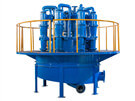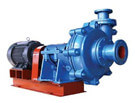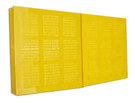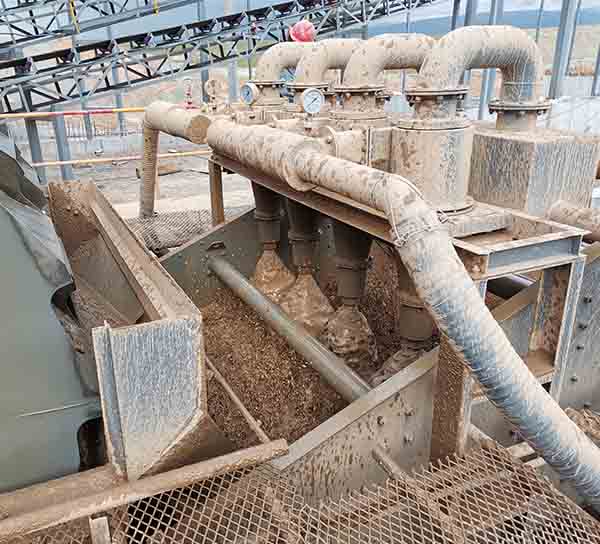Hot Product

- Hydrocyclone Group
Hydrocyclone group is widely used in coal preparation plant...

- Slurry Pump
Slurry pump is mainly used in mining, power plant, dredging, metallurgy...

- Polyurethane Dewatering Screen Panel
In addition to the performance of...
What Are Types of Cyclone Separators?
Date: 2021-05-20 From: Longding Author: admin
Cyclones separator can be mainly divided into grading cyclones, dehydration cyclones, desliming cyclones, slag removal cyclones, concentration cyclones, and cyclone group, according to the function. The hydro cyclone is mainly used for the classification and solid-liquid separation of materials of different particle sizes and is widely used in the classification of raw materials such as mining, chemicals, cement, construction, and tailings.
Types of cyclone separator
1. Classifying cyclone
The classification type cyclone is mainly used to separate and classify materials, such as solid-liquid separation, coarse and fine separation, etc. Generally, cyclones are widely used in the grinding stage of small and medium-sized concentrators to achieve the effect of controlling classification.
2. Dehydration cyclone
The dehydration cyclone is mainly used for the dehydration of various mineral slurries. According to different material characteristics and production environments, different structural designs are adopted. The dehydration cyclone has the advantages of high dehydration efficiency and large processing capacity. For example, in a tailings dewatering operation, the feed concentration is 5-12%, and the content of -200 mesh is 75%. The average concentration of the overflow of the cyclone is controlled below 1.5%, which effectively removes water and avoids the loss of useful minerals. In the dewatering operation of silica sand, the overflow concentration of the dewatering cyclone reached below 0.5%. The overflow is almost unqualified fine mud, which achieves the dual effects of dehydration and desliming. The overflow water of the cyclone can be reused after settlement, saving cost.
3. Desliming cyclone
The desliming cyclone is mainly used for desliming operations of various metal ores and non-metal slurries. The desliming cyclone has the advantages of high efficiency, less mineral loss, and cost-saving. For example, The tailings discarded by silica placers accounted for 12.7% of argillaceous minerals, and the fineness of -325 mesh accounted for 39.3%. Almost all of the argillaceous minerals were stored at the -325 mesh level.
4. Slag removal cyclones
The slag cyclone is widely used in power plant wet desulfurization, lime pulping, tap water desanding, sewage treatment, and other operations. The coarse sand, metal, and other particles in the slurry can be effectively removed. It has the advantages of high slag removal efficiency and less loss of useful slurry.
5. Concentration cyclone
Concentration cyclones are often used in conjunction with thickeners, dewatering screens, filters, and other equipment to improve dehydration efficiency and achieve the concentration function before filtering various minerals. Concentration cyclones are also often used in pulp flotation and dry tailings operations to achieve pulp concentration.
The concentrated cyclone is also dehydrated in nature, and the underflow slurry concentration out of the classification is greater. The structure and installation of the concentrated cyclone can be adjusted according to customer requirements and the specific conditions of the front and rear operations to achieve the optimization of the use effect. The cyclone utilizes a unique internal structure design, which can produce a higher underflow concentration under the premise of a lower overflow concentration, improve production efficiency, reduce expenditures, and save costs.
6. Cyclone group
The cyclone group is also called a combined cyclone, which is composed of two or more hydrocyclones combined in a certain way. The combination can be in series or in parallel.
In terms of combination, it can be divided into three types: mother-child cyclone, cylindrical-cone two-stage combined cyclone, and rotating-dynamic parallel combination type. In terms of shape, it can be divided into two types: circular cyclone group and square cyclone group.
Previous:Factors Affecting The Classification Efficiency of Hydrocyclone Sand Separator
Next:Five Operation Modes of Hydrocyclone in The Process of Grinding And Grading
Leave a Message
Here you can submit any questions and we will get back to you as soon as possible. We will not disclose the information you submit to anyone, please rest assured.



Inquiry